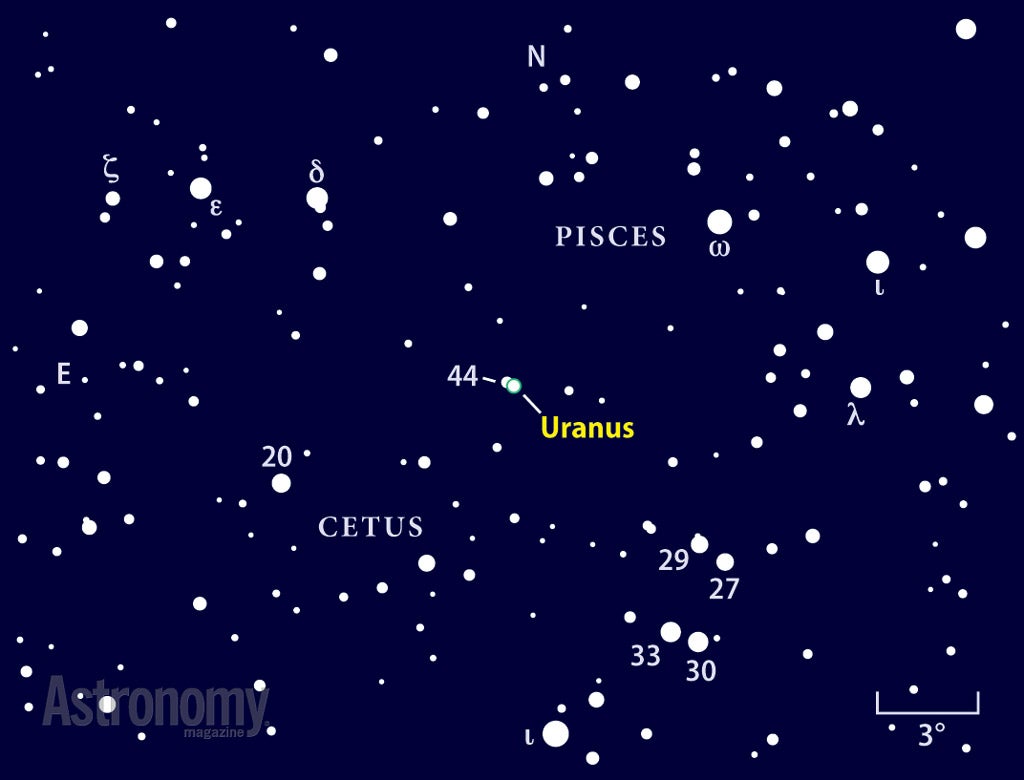“Uranus peaks at magnitude 5.7, which makes it just bright enough to see with naked eyes if you observe under a dark sky,” says Senior Editor Richard Talcott. “Even from the suburbs, though, a small telescope will make the planet’s disk stand out.”
Start looking for Uranus a week before opposition on the border between the constellations Pisces the Fish and Cetus the Whale. The 6th-magnitude world outshines most nearby stars except 44 Piscium. On September 22, the ice giant appears 1.4′ due east of this sun. View the double-star-like pair through your telescope at medium power. Uranus’ blue-green color and 3.7″-diameter disk creates a nice contrast with the pinpoint star.
By opposition, the planet and its stellar companion lie some 15′ apart. That night, you can use the night sky’s brightest object to spot the pair: On the evening of September 29/30, the Full Moon passes 5° north of the duo. Although the glare of our satellite washes out a lot of the sky, binoculars should still reveal Uranus and its “companion.”
“You won’t see any detail on Uranus’ disk, even through a telescope,” Talcott says, “but it’s still exciting to spot the first planet discovered since antiquity, knowing it eluded observers for centuries.”
Fast facts
- Uranus was the first planet discovered with telescopic aid, first spotted by British astronomer William Herschel on March 13, 1781.
- Uranus’ blue-green color is a result of the planet’s methane, which absorbs red wavelengths and reflects blue.
- Uranus has a ring system that earthbound observers see edge-on every 42 years due to the distant planet’s changing seasons.
- Planetary scientists have discovered 27 satellites orbiting Uranus and have named them all after characters in works by William Shakespeare and Alexander Pope.
- Scientists think a huge collision early in Uranus’ history knocked the planet on its side; its rotation axis is now nearly parallel to its orbit.
- Uranus completes one orbit in 84.01 Earth years, and it rotates once every 17.24 Earth hours.
- Video: Tour the solar system: Uranus, with Liz Kruesi, associate editor
- StarDome: Locate Saturn in your night sky with our interactive star chart.
- The Sky this Week: Get your Uranus info from a daily digest of celestial events coming soon to a sky near you.
- Sign up for our free weekly e-mail newsletter.











